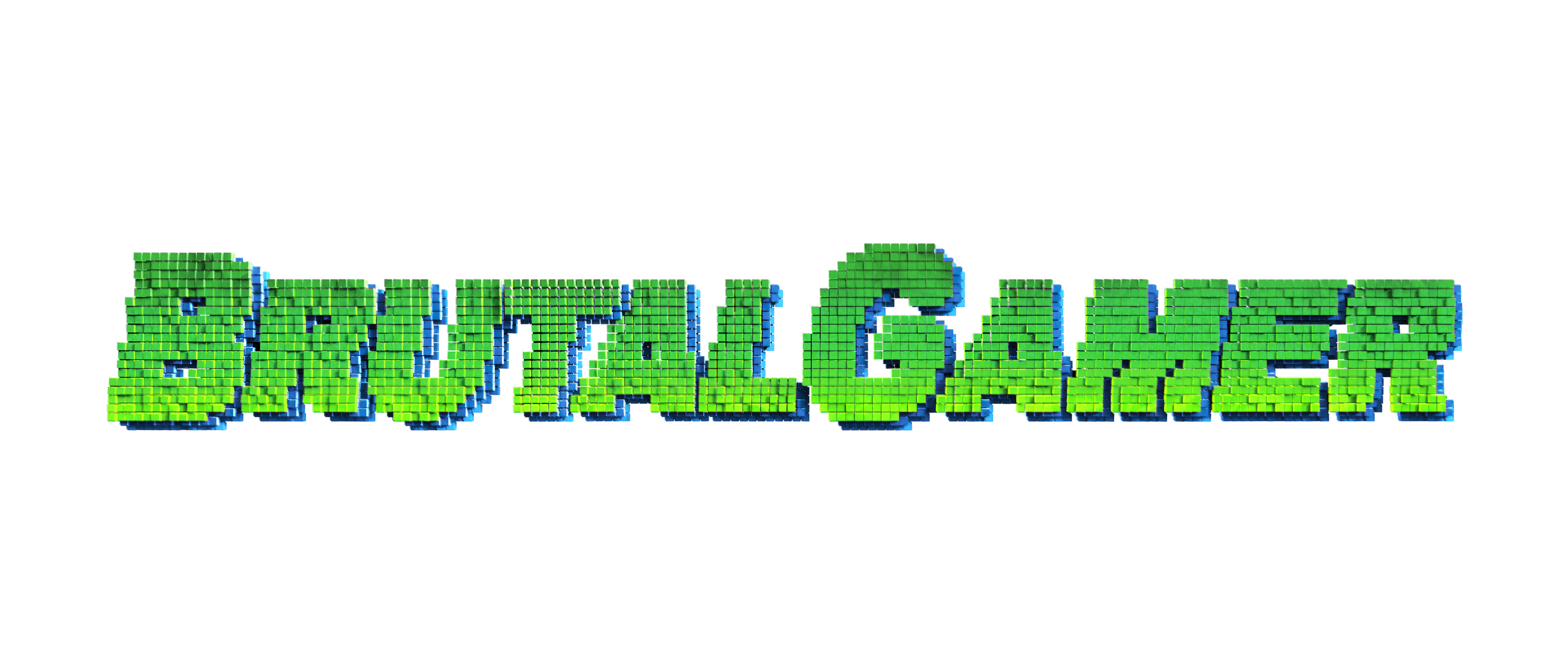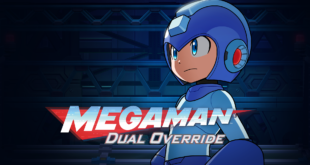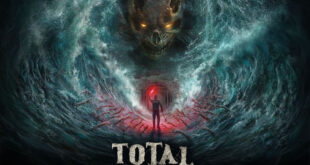I had the pleasure of having a virtual sit-down with Dan Fisher, the creative brain behind Astro-Miners, to talk about his experience in game development with the ROM and what it was like to make the game.
*NOTE* This interview has been edited for brevity and clarity.
Dan Spiler, BrutalGamer.com: So first up, let’s go over the ROM Game Jam, and get a sense of what that’s all about. The process and experience, and how it’s similar/different to other game jams (TOJam, GGJ, etc).
Dan Fisher: ROM Jam started 4 years ago as a way to engage with the public and bring parts of the ROM “to life”. I did a game for the 2nd Jam, which we called “Dodo a Gogo”. Each Jam has a theme, connected to a particular area of the museum. Dodo ended up being a game that the ROM liked, and so they displayed it a few times throughout the year. As an educator, (I’m a principal by day) I was interested in using games to help kids learn and engage with the ROM.
Initially, I don’t think the ROM realized that partnering with developers could be mutually beneficial. I don’t think they really understand game dev, but they gradually invited people like myself to sit on steering committees for subsequent events. Now, with Astro-Miners, there seems to be a better understanding of the path for developing and publishing games over time, and how a game goes from a jam prototype to an actual published title. In those ways, it’s different to other jams. You do it at the ROM with ROM experts on hand, playtest it afterwards on the public, and you can publish if you stick with it and finish it.
BrutalGamer.com: Interesting that they’ve put so much faith into something that would seem foreign or out of place for them (game jams), yet is so popular and commonplace, in Toronto especially. Or is that maybe why they started the Jam in the first place, as a way to bring digitalization to the museum, something they saw worked well around the city for other things?
Fisher: I think that they understand that an institution like the ROM has to innovate to stay relevant. They aren’t into making money per se (as is the case with most educational institutions), but they are interested in connecting with people. The ROM Game Jams are a pretty cool way to do that. The first year, Jaimie Woo was involved somehow, as was U of T, I believe. Then devs like myself, and Francesco from Last Hour Games got involved and it kept going.
BrutalGamer.com: Okay, so with respect to Astro Miner, it was started during the 4th ROM Game Jam?
Fisher: 4th was two weeks ago. That was our launch. The 3rd ROM Game Jam was when we started Astro-Miners.
BrutalGamer.com: So last year was the 3rd ROM Game Jam, and the theme was geology? Space?
Fisher: Space Rocks. As in “Space Rocks!” But also…”space rocks” as in rocks in space.
BrutalGamer.com: Clever. Based on that theme then, how did you get the inspiration/core idea for Astro Miners? Was it just a natural progression of Space Rocks? Or was there more to the idea?
Fisher: Another way that the ROM Jam is different is that they have an info session the week before, and they provide participants with a dossier of info and even some digital files to play around with before the jam. We talked about what sorts of games kids like and drew up a sketch of a little guy blowing up rocks. We’re weren’t deliberately referencing Minecraft, but one of the most fun things about Minecraft is that sort of endless grind as you tunnel your way towards things.
BrutalGamer.com: That’s just smart design, looking to what’s already popular with kids.
Fisher: We also knew the game had to be playable at the ROM by people walking through, so a head to head version seemed smart, and kid friendly. And actually, the best game from the first jam was Clash of Talons, a local 2 player head-to-head title. So we kinda made a game that ROM visitors would like, because we wanted the ROM to pick us for further development and showcasing.
BrutalGamer.com: How involved in the development process is The ROM? What kind of things are they bringing to the partnership?
Fisher: The ROM has been really great, but we have had to teach each other about how our different businesses work. The ROM provides opportunities to playtest, and access to ROM staff to advise on the science content of the game. They also help to promote the game via their channels: mailing list, twitter, etc. In return we get to use the logo, and a portion of sales goes back to the ROM. We still have complete creative control, though.
BrutalGamer.com: And all it takes to get started is attend/sign up for the next ROM Game Jam? Or is there a more selective process? What’s the barrier to entry for someone to get involved in this?
Fisher: You have to apply for the Jam and get in. We (the steering committee) vet the applicants so that we have a diverse group, but most people get in. That’s Step 1. Step 2 is you polish up your build within a week or so of the jam and submit it. If the ROM likes it, they showcase it at a Family Fun Day, for instance. If you keep working on it, you can be shown more, and eventually you can request a meeting. That’s when you negotiate the publishing details, set a release date, plan a release/launch, etc.
BrutalGamer.com: So with roughly a year of work, you’ve gone from Jam idea to published game?
Fisher: Yeah but the marketing, as you know, is the real work. Having the ROM on your game can open doors, but you still need to be working Twitter, going to shows, chasing reviews, etc.
BrutalGamer.com: Well, I have to say that whoever did your press release did a superb job.
Fisher: Ha ha. I’m a former creative writing major. Half of our 4-person team are actually “international” artists. 1 guy from Ukraine, 1 guy from Holland. So I do the English stuff.
BrutalGamer.com: What made you decide to use outside talent vs local talent, especially given the density of schools and whatnot in the area?
Fisher: I got into game dev as a music guy and then took over marketing, writing, and a bit of level design stuff for Stratum Games. Then I decided to learn code for myself and do my own thing. I started taking Stencyl lessons from this 23 year old in Holland. We struck up a friendship and he ended up doing much of the coding for AM. The Ukrainian guy I met through Robert French, a professor at Trios. I asked him for his best student artist and he sent me an email. Oleg is “local” in the sense that he lives here, but he’s from the Ukraine.
BrutalGamer.com: Let’s focus on you for a moment. You’ve got an interesting background: Creative Writing, to Educator, Gamer, and Father. Which parts played the important roles when coming up with and designing the game? Did you get your kids to playtest the early version post-jam?
Fisher: For sure, I did. I love learning, and I think that game dev and code literacy are the future of education. We’re teaching tomorrow’s adults with yesterday’s tools, in a lot of cases. Game dev is the ultimate collaborative, creative, critical thinking exercise. Most schools aren’t even teaching coding. Period. But kids are ready for it. The world has changed and education needs to always try to catch up.
BrutalGamer.com: Is that why, as an Educator (and maybe even a Gamer Dad), the ROM Game Jam was something that appealed to you and caught your interest? Or was it more from the game dev side, and you were looking for an outlet to create?
Fisher: A bit of both. I wanted to get out of mobile (I had done a few things and I hate that market). I was also curious about what we could accomplish if we had “ROM branding”. Fundamentally, though, I could make games for the ROM that my kids could enjoy and I could be proud of. I also like the scope of the whole thing. If you work on an indie project with no real pressure to complete it, often you don’t complete it. Signing up with the ROM forced some deadlines on us, which are essential for actually getting things done.
BrutalGamer.com: So occupationally, you’re an Educator first and Game Developer on the side, or is the focus the other way around?
Fisher: I spend my days as a principal, but a lot of what I do as a principal is around integrating technology into classrooms. I learn game dev partially because it immerses me into the world of a 21st century learner. I get to actually be a “kid” in 2016 and use all the tools that the internet has to offer to solve problems and make games. That’s what education should be: self directed, meaningful, authentic, etc. My work life and my personal (dev) life have been intersecting more and more recently.
BrutalGamer.com: I loving hearing and being around that kind of environment. It’s very inspiring.
Fisher: I’m very lucky.
BrutalGamer.com: So from a design POV, what made you go with the idea of the little man shooting space rocks?
Fisher: We wanted players to have a sense of discovery, so we went with a camera POV that let you see a bit of what was coming up, but still required you to explore. We played with the idea of 360 degree shooting, but it seemed too easy. Sometimes when you limit players in certain ways, you get a more interesting experience. We wanted to capture some of the more classic elements of video games without the soul-crushing difficulty of earlier games. It is for kids, after all.
Having said that, there are lot of things that kids today don’t or can’t do. You and I know how to use a HUD; Younger kids don’t use a HUD, so we started putting all the info onto the player. The supermine turns you blue, and that used to be in the HUD. There used to be limited mines, but kids wouldn’t look up to see how many they had. That sort of thing gets worked out if you make time for lots of playtesting. If we’d had more time, I would have liked more enemies, more things to discover. We also had “non destructible” rocks, which got cut.
BrutalGamer.com: Well the game as it stands is excellent, and exactly the kind of game that engages kids and keeps them interested, something they enjoy.
Fisher: Thanks. Kids do seem to like it, actually. Play testing is hard, though, heh. You want to tell everyone what to do, but you have to shut up!
BrutalGamer.com: Speaking to development, what would you say is your favourite mechanic or feature in the game? And your favourite mechanic or feature that you had to cut?
Fisher: I like that we have robots that help you, and ones that hurt you. Kids seem to enjoy that, in particular. We had an upgrade system mapped out, which was going to run on collected minerals, but it was going to be too much to squeeze in before the deadline. I always loved games where you could build up your character!
BrutalGamer.com: Is it something you’d like to add to the game post-launch? Or are you done, signed and sealed, with development of Astro Miners?
Fisher: We’re still developing. We are working on a mobile build because the rest of the team thinks there’s money in it haha. And once the contract with the ROM expires (1 year) we are free to do whatever we want with the game. So we might throw it up on Kongregate, try to bundle it…not sure really. As you probably know though, it’s hard to get people to work on a game once it’s “done”.
Dan Spiler, BrutalGamer.com: Indeed, it’s always a challenge once the initial burst of momentum and motivation is spent. Well that about wraps up the interview with Dan Fisher, lead developer behind Astro Miners!
Dan Fisher: I had fun chatting!
 BrutalGamer Bringing you Brutally Honest feedback from today's entertainment industry.
BrutalGamer Bringing you Brutally Honest feedback from today's entertainment industry.





